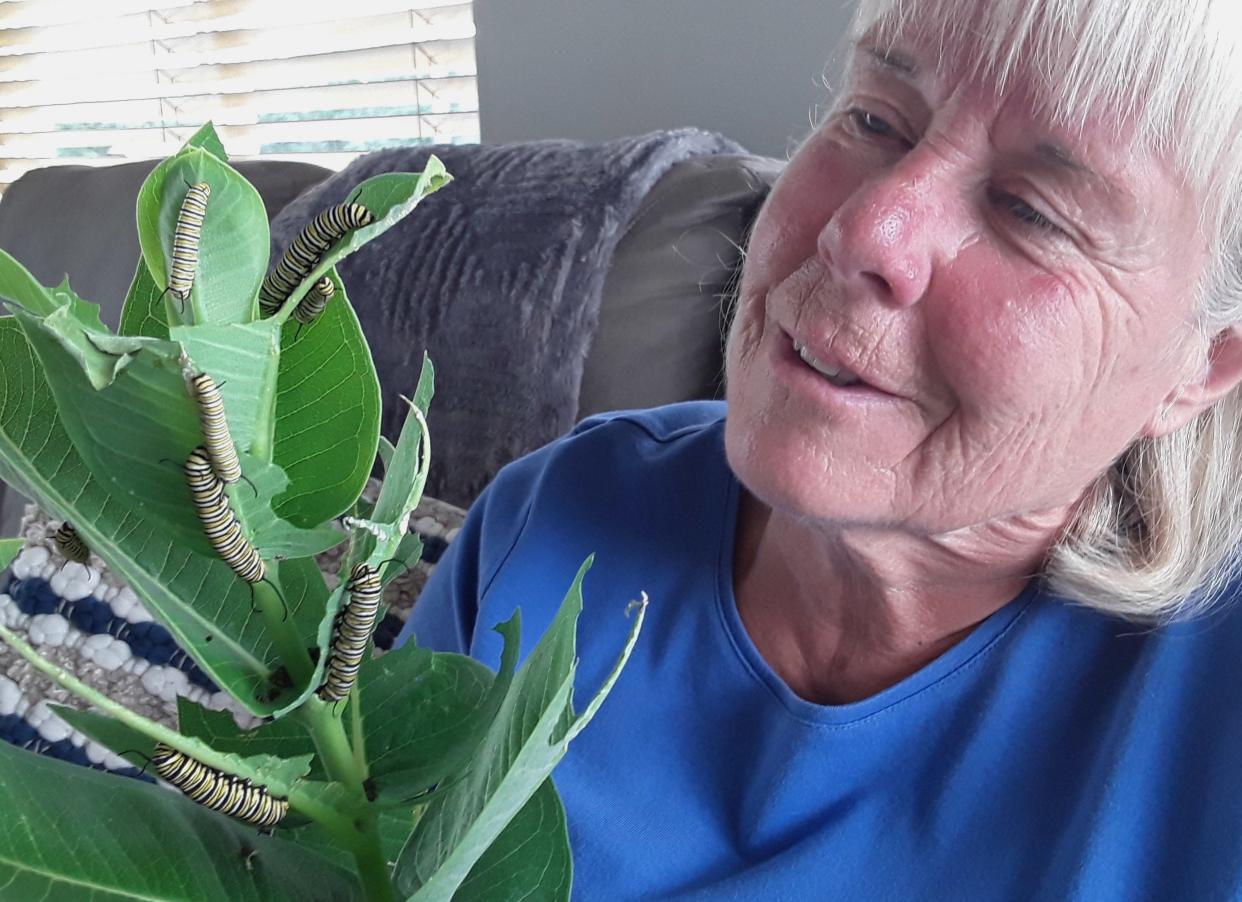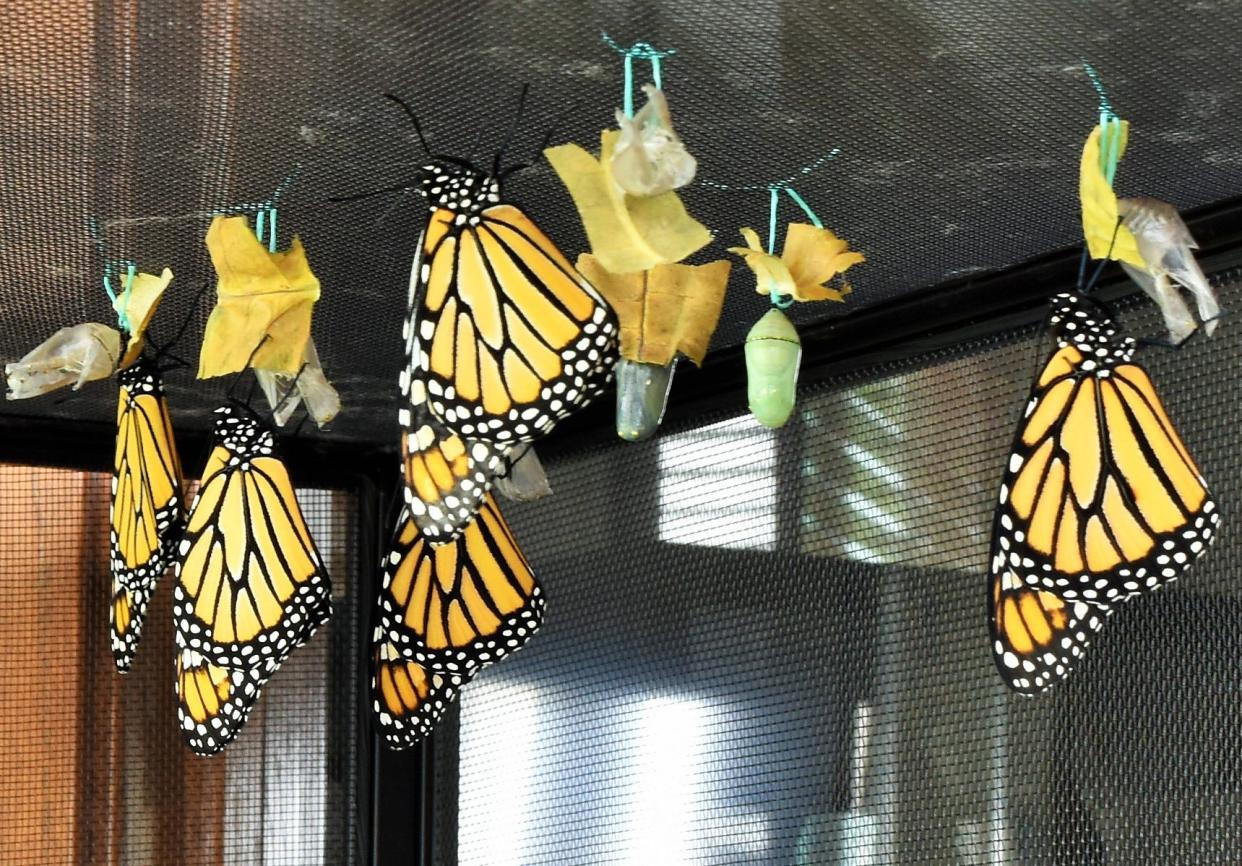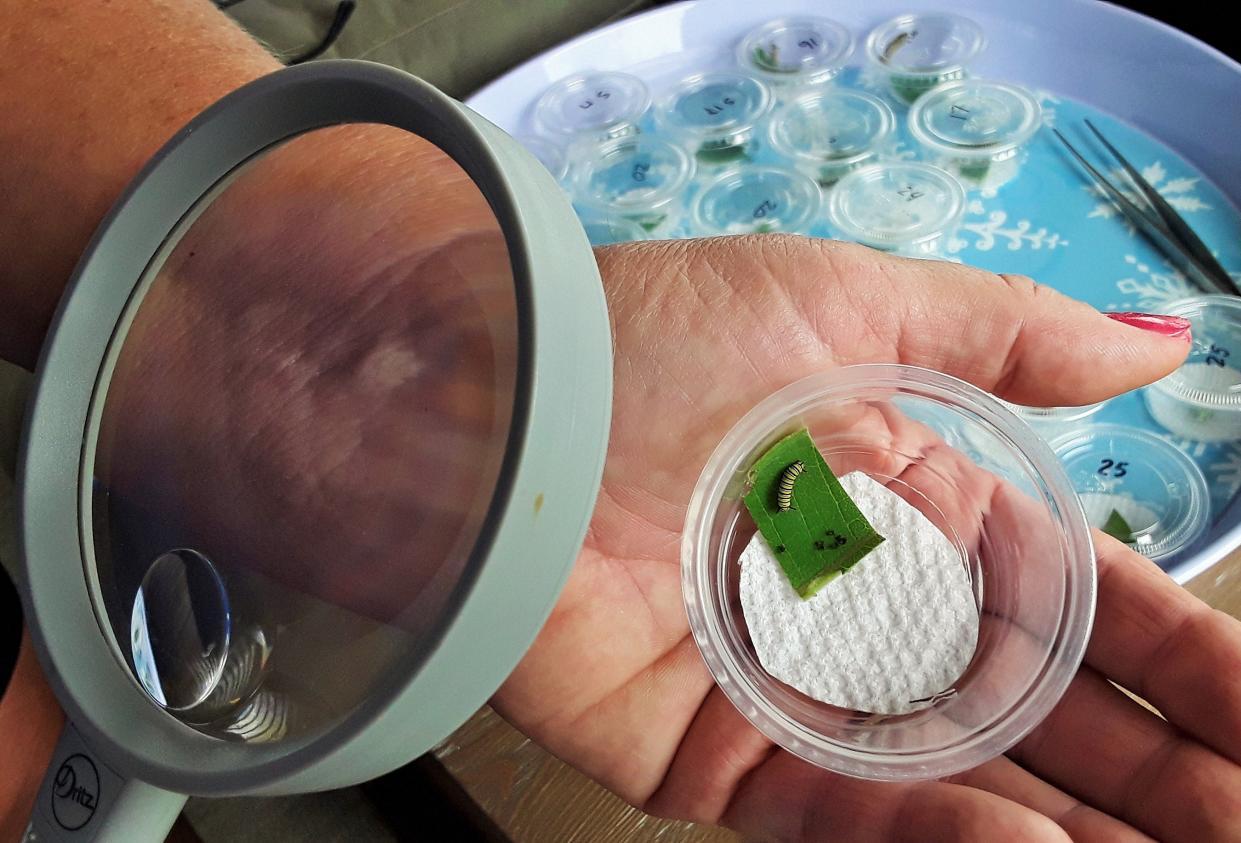'The Monarch Whisperer': How a Solon woman is doing her part to keep butterflies from dwindling
Glenda Eubanks of Solon immerses herself daily in one of the most mind-boggling miracles of nature — the fascinating life cycle of monarch butterflies.
Sparked by the interest of a young granddaughter and boredom during the COVID-19 pandemic, the retired nurse is now in her third year raising monarchs from a tiny speck of egg into full-grown, orange-winged beauties.
Why? Because she finds the work fun, fascinating and educational, not to mention rewarding.
Monarchs are pollinators and important to the food chain, but are suffering a drastic decline in numbers everywhere. Eubanks and many others like her hope their work can help increase awareness and slow the trend, if only in a small way.
“The first summer, I released about 50 butterflies,” she said. “Last summer, I released 182. This summer, things are slower. Cold weather in Texas may have interfered with their flight back north, then we had a cold spring here.”
The “flight” she refers to is the annual migration of monarchs to their winter feeding and breeding grounds in Mexico, then back north in the spring. It’s a well-documented, jaw-dropping phenomenon said to be the longest migration of any insect — up to 4,000 miles round-trip for some.

“By the time they get back to Iowa, you can tell their wings are pretty beaten up,” Eubanks said.
Her task begins in late spring when these exhausted travelers return to lay their eggs on milkweed plants in her backyard and in other patches nearby.
Simplified, here is what Eubanks does:
Each day, she checks milkweed leaves for a pinhead-size egg she said resembles “a little cream-colored football.” They are hard to spot, so she often uses her magnifying glass.
She then cuts a small section of leaf with the egg on it, places it in a small covered plastic cup, writes the date on it and places it on a tray in the den of her home. When she spots a black dot on the egg after a few days, she knows it is ready to hatch.
The tiny emerging caterpillar then grows quickly, shedding its skin five times and munching on milkweed leaf after leaf provided by Eubanks. When it is about an inch long, she transfers it by forceps to larger milkweed plant cuttings at the bottom of a large wire net enclosure.
Eventually, the caterpillar crawls up to the top of the enclosure and hangs from the ceiling” by discharging a sticky silk. Through metamorphosis, it transforms into a green chrysalis, then into the adult butterfly emerging 10 days later. Carefully released by its nursemaid, the butterfly heads out to find food and a mate.
This process is repeated three more times during the warm months here, with the first three monarch generations having only about a one-month life cycle. The fourth generation, however, lives eight or nine months to make that winter trip to Mexico and back, if not eaten by a bird or hit by a truck in Texas.

Eubanks says proper care is required to make sure monarchs reared indoors are released healthy and disease-free. That means cleaning up the caterpillar frass (poop) often, providing constant fresh milkweed leaves and allowing the butterfly wings to dry thoroughly before release.
Some sources say small-batch indoor operations are fine, but that providing more habitat outdoors should be the emphasis to improve monarch numbers. Eubanks agrees, but says monarch eggs only have a 10% chance in the wild to make it to the butterfly stage, compared to a 90% chance for those reared indoors.
“They have so many predators in the wild,” she said. “Insects like the tachinid or T-fly that lays eggs on a caterpillar’s back, which then burrow into its body. And wasps. I found one patch of milkweed that had so many wasps in it I would not go in there.”
Eubanks consults with online support groups, plus friends who share her passion. One is Sue Wilkinson, also of Solon, who said she became interested after seeing a presentation and finding eggs on what she said was a “plentiful supply of milkweed” near her home.
“I was hooked,” she said. “Rearing monarchs is much easier than I thought it would be. I’ve released several so far and have numerous caterpillars on their way. Glenda is a great mentor and even took care of our ‘little ones’ while we were away for a few days this summer.”

Eubanks’ husband Bob calls her “The Monarch Whisperer.”
“I grew up on a farm, so taking care of animals kind of came natural to me,” she said. “Now, we’re putting more butterflies out there that may survive. That makes me feel good.”
She cites another, more personal factor keeping her interested in this hobby. Her mother died of COVID at age 89. Now, watching a miraculous life cycle repeated in her home provides her with some comfort.
“When I see a beautiful butterfly emerging, I think of my mother,” she said. “So I guess that sort of makes me want to do what I do for them.”
This article originally appeared on Iowa City Press-Citizen: Solon woman tries to preserve monarch butterflies population
